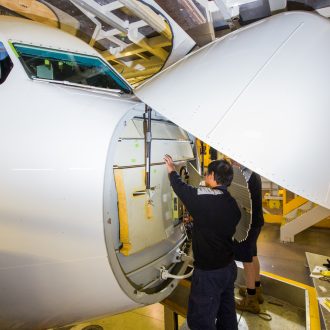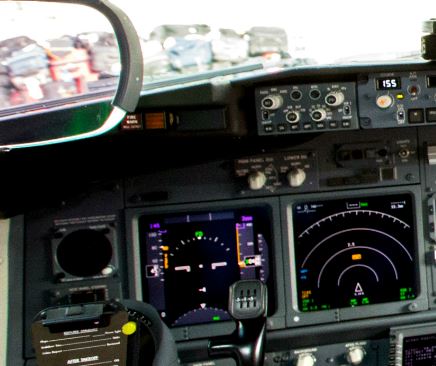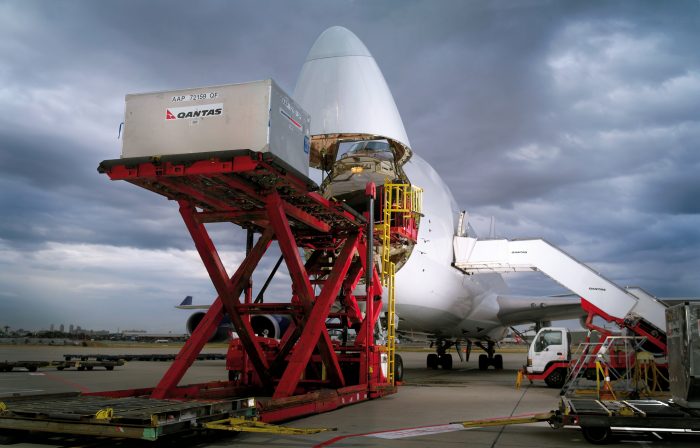When you think of the “pointy end” of an aircraft, you’re probably thinking of 1A, lie flat beds and champagne.
But if we’re going to be really literal about it, the pointy end is actually the nose cone. And occasionally, it goes under the knife.
And by knife, we mean screwdriver. So what’s under there?

One of our engineers completing a small nose job
Underneath the nose cone (also known by its technical term – radome) sits a weather radar dish, which is fixed to a mount of reinforced metal.
The nose cone is attached to the airframe by hinges, allowing access to the radar underneath.
To ensure the radar waves and signals are easily transmitted, the radome is made from a composite material rather than the aluminium found on the rest of the fuselage (the entire front section of the plane).
The radar transmits a signal that bounces off objects and allows pilots to view weather conditions such as thunderstorms on displays in the flight deck.

A radar screen inside the flight deck of a Qantas jet
The radome also acts like a bumper bar protecting the radar dish underneath – a very important factor in the rare event of a bird strike.
Nose cones are inspected before every flight to ensure there’s no damage and they get replaced on an as needs basis. We always have a few spare cones in our maintenance facilities in case of any unplanned bumps to the nose
It’s crucial that the radome is in top condition as it also plays an important role in maintaining the aerodynamics of the plane.
And on even bigger aircraft like the two Boeing 747-400 freighters Qantas uses to transport freight, the entire nose cone of the aircraft swings upwards for cargo to be loaded.

A freighter with its nose up before it goes wheels up for its journey into Asia